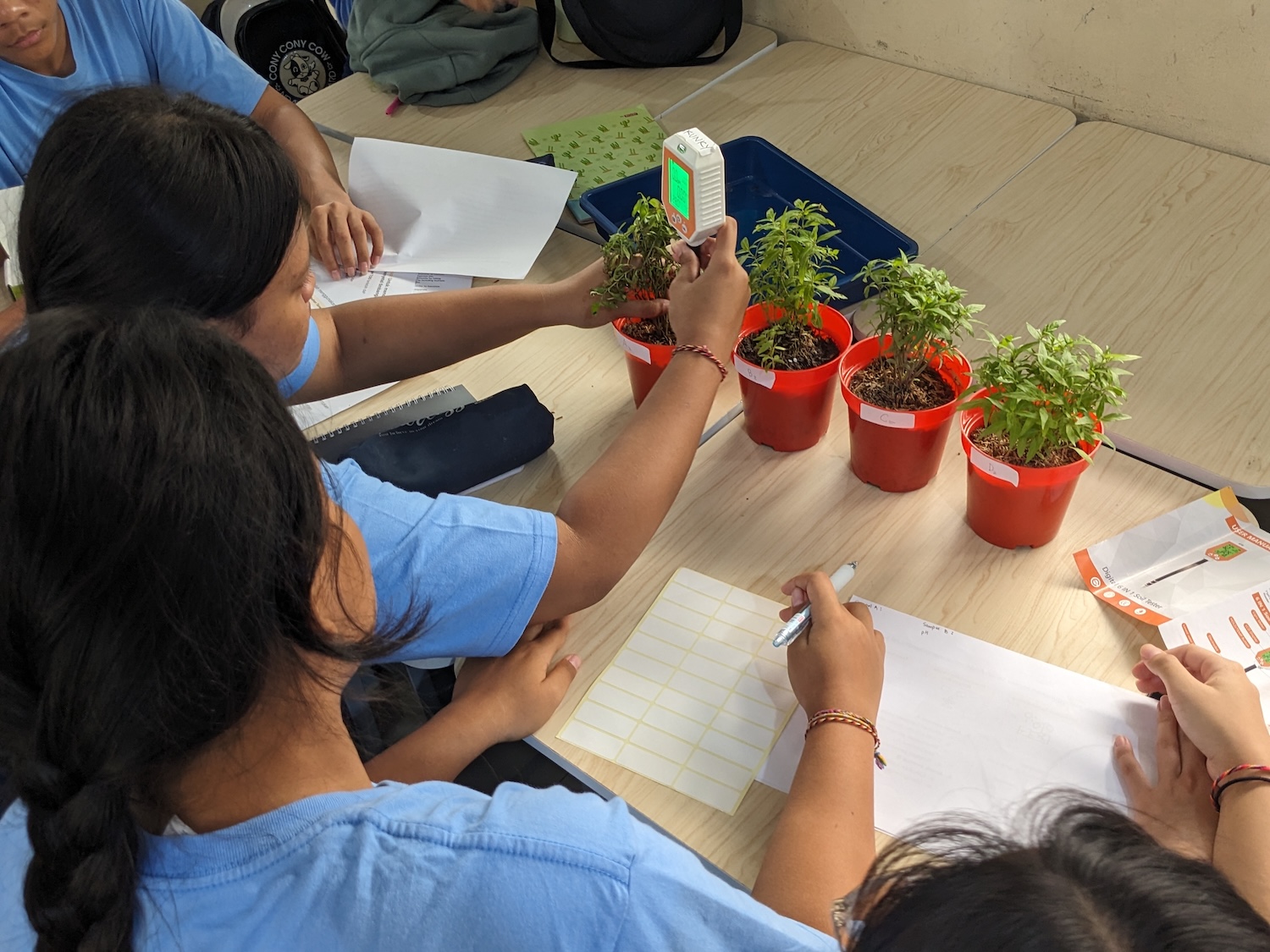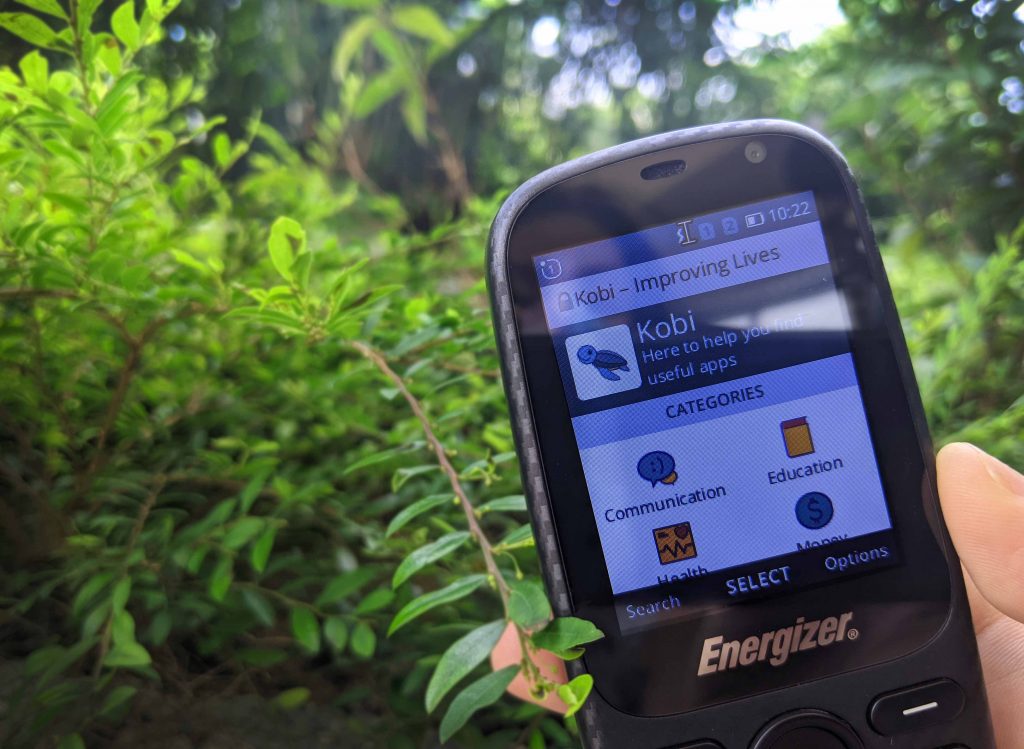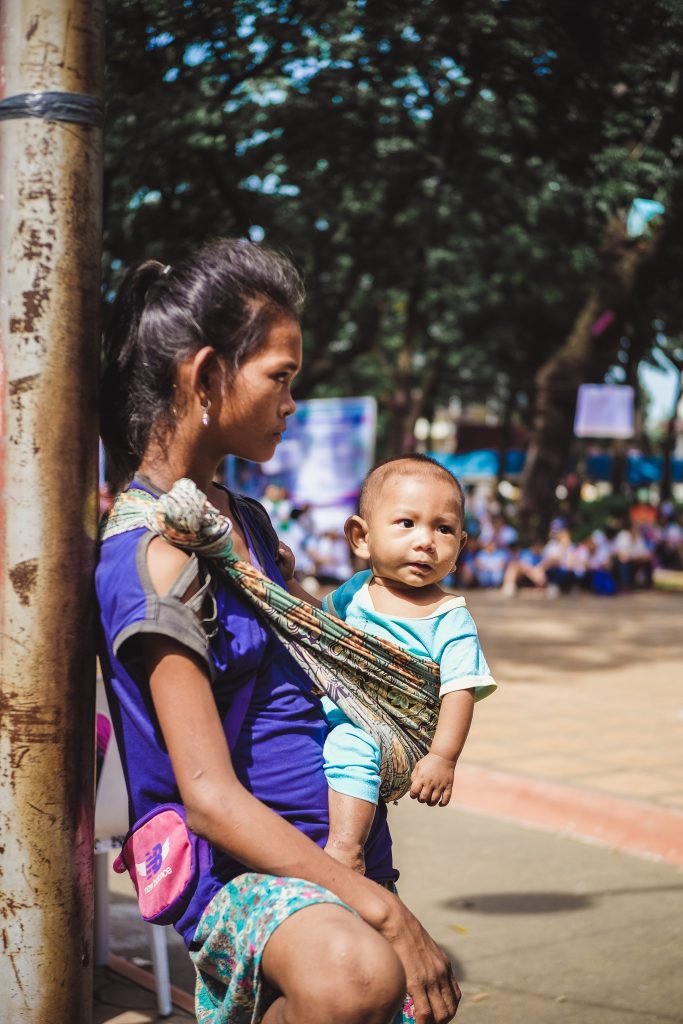On a school holiday in July 2025, something unusual happened at SMP Negeri 3, a middle school in Denpasar, Bali. Instead of being away from campus, a group of 13- and 14-year-old students gathered for their extracurricular science club to explore tools most of them had never encountered before. SpudnikLab brought their Science Kit prototype to the school, and what unfolded was a glimpse into how accessible, low-cost scientific tools can transform not just what students learn, but how they see the world around them. The workshop, facilitated in collaboration with partner organisation in Bali, research and development lab Kopernik, was part of Spudniklab’s iterative design of the Science Kit. How might the prototype be improved or evolved to better serve the needs of real life users, in this case, teenage students in a Balinese school?
Making the invisible visible
The workshop began with the Foldscope—a portable paper microscope that costs only a few dollars and attaches to smartphone cameras. At first glance, it seems almost impossibly simple: a flat piece of paper with a tiny lens embedded in it. But this humble tool opens a window into worlds that exist all around us.
The students examined samples of boiled water, shallot skins, and pool water. Using their phone cameras and torch lights, they peered through the Foldscope and suddenly saw what had always been there but hidden: the cellular structure of onion tissue, the microscopic organisms swimming in pool water, the crystalline patterns in boiled water residue.
The students then ventured outside to collect their own samples. There were no limits. They returned with treasures—leaves, flowers, even a strand of their own hair. This openness to identifying anything that could serve as a subject of scientific inquiry pointed clearly to the function of the Science Kit, in this prototype stage, enabling their curiosity and connection with the natural world.
Why does this matter? Because understanding that life exists at scales we cannot see fundamentally changes how we think about our environment. That murky pond water isn’t just “dirty”—it’s teeming with microorganisms, each playing a role in the ecosystem. Those plant cells students observed are the basic building blocks of the crops that feed us, the trees that produce oxygen, and the algae in the ocean that regulate our climate.
One student even began thinking beyond the provided samples, asking whether the Foldscope could help with his personal project examining corrosion levels in boat steel. This leap—from following instructions to imagining new applications—is exactly the kind of scientific thinking that leads to innovation.
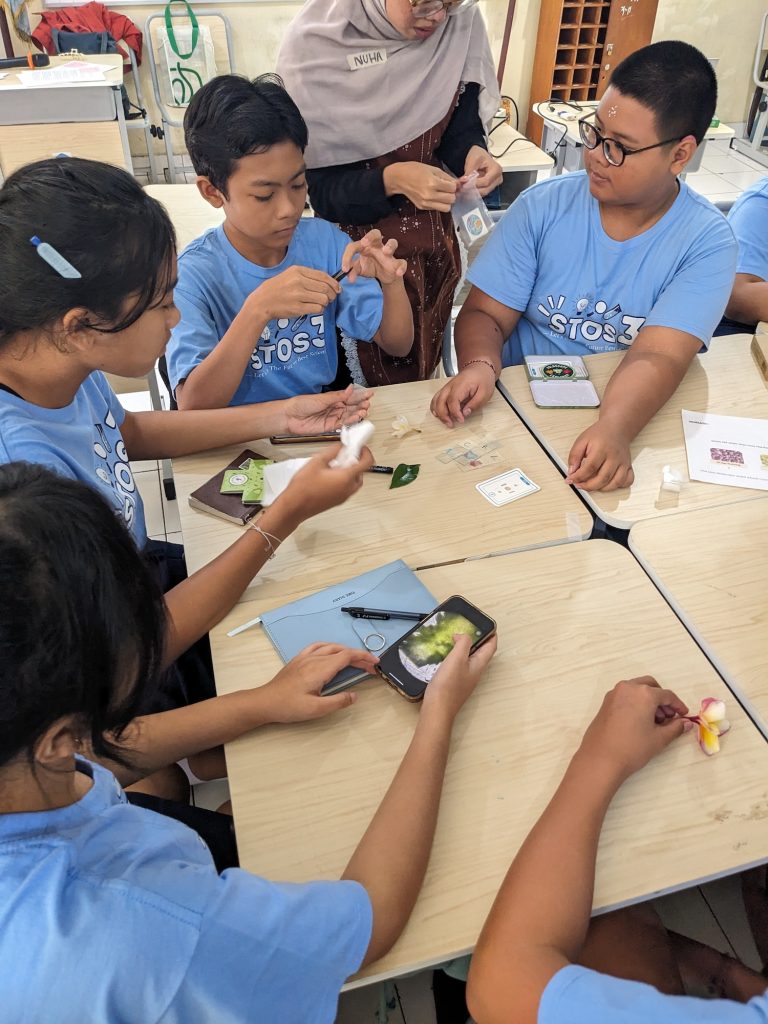
Understanding soil: the foundation beneath our feet
The second activity introduced students to soil pH testing. But first, what is pH, and why should anyone care about it?
pH measures whether something is acidic (like lemon juice), neutral (like pure water), or alkaline (like baking soda), on a scale from 0 to 14. Soil pH matters enormously because it determines whether plants can actually use the nutrients in the ground. Even if soil contains all the nitrogen, phosphorus, and potassium plants need, if the pH is wrong, those nutrients remain locked away in chemical forms roots cannot absorb.
Bali’s agricultural heritage depends on healthy soil. The island’s famous rice terraces, its coffee plantations, its fruit orchards—all rely on maintaining soil conditions within the right range. As climate change brings unpredictable rainfall patterns and as agricultural practices evolve, understanding and monitoring soil health becomes increasingly crucial.
The students learned to use a handheld soil sensor that measures not just pH, but also moisture, temperature, and electrical conductivity (EC). That last term—electrical conductivity—simply measures how many dissolved salts are in soil water. The higher the concentration of dissolved salts, the more ions present to carry an electrical current, and a higher EC reading. Too much salt, and plants struggle to draw water through their roots. Too little, and certain essential nutrients may be scarce. The amount needs to be just right.
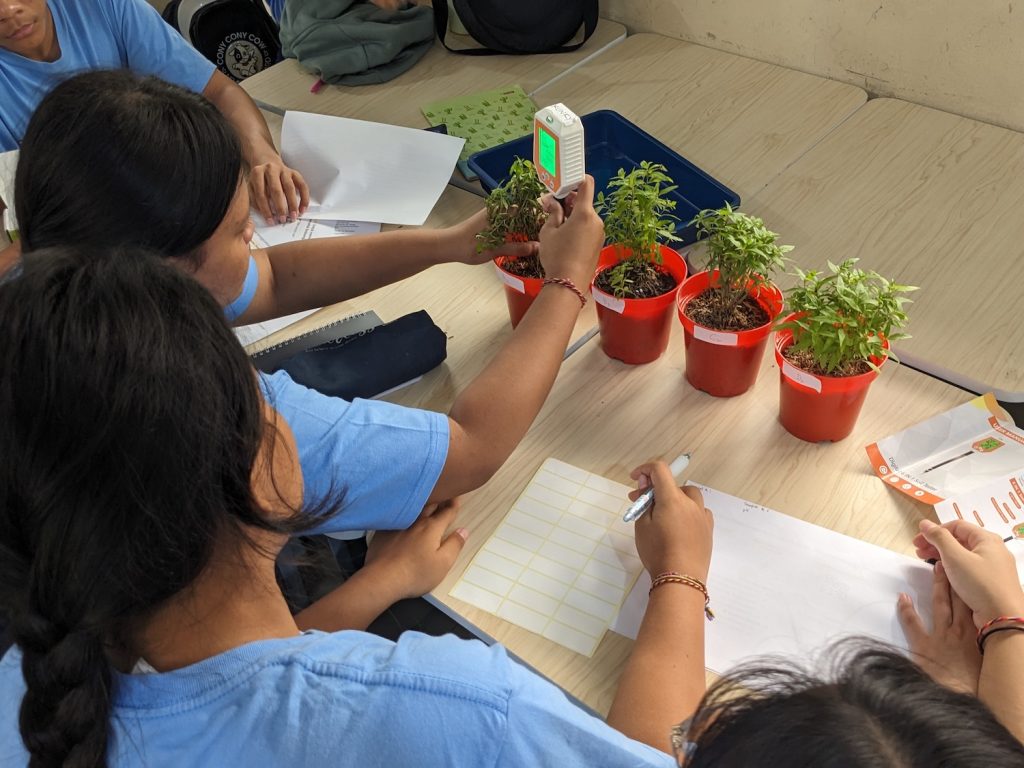
Building environmental stewards for tomorrow
How does examining onion cells through a paper microscope or measuring soil pH help the environment?
The connection might not seem obvious at first, but it’s profound. When students develop hands-on familiarity with scientific tools and concepts during their formative years, they build what educators call “scientific literacy”—the ability to understand, evaluate, and engage with science throughout their lives.
Consider the challenges Bali faces: coastal erosion, coral reef degradation, plastic pollution, agricultural runoff affecting water quality, and pressures from rapid tourism development. Addressing these issues requires citizens who understand environmental science well enough to make informed decisions—whether as voters, community members, farmers, business owners, or professionals.
A student who has measured soil pH and EC firsthand understands, in an embodied way, that soil isn’t just “dirt.” It’s a complex living system with chemistry that can be measured and managed. When that student encounters news about agricultural practices affecting water quality, or debates about land use, they can draw on direct experience rather than abstract concepts.
A student who has seen microorganisms under a microscope understands that invisible life forms are everywhere, playing essential roles. When they later learn about how certain bacteria fix nitrogen from the air, making it available to plants, or how microplastics affect marine microorganisms at the base of the food chain, these aren’t just words on a page. They connect to something witnessed firsthand.
Moreover, SpudnikLab’s Science Kit is designed for “citizen science”—the idea that ordinary people, not just professional researchers, can contribute to scientific knowledge by collecting data about their local environments. Students who learn these tools now could, in the future, participate in monitoring their community’s soil health, water quality, or biodiversity. This data can inform local environmental decisions, contribute to global research databases, and help communities adapt to climate change by tracking conditions over time.
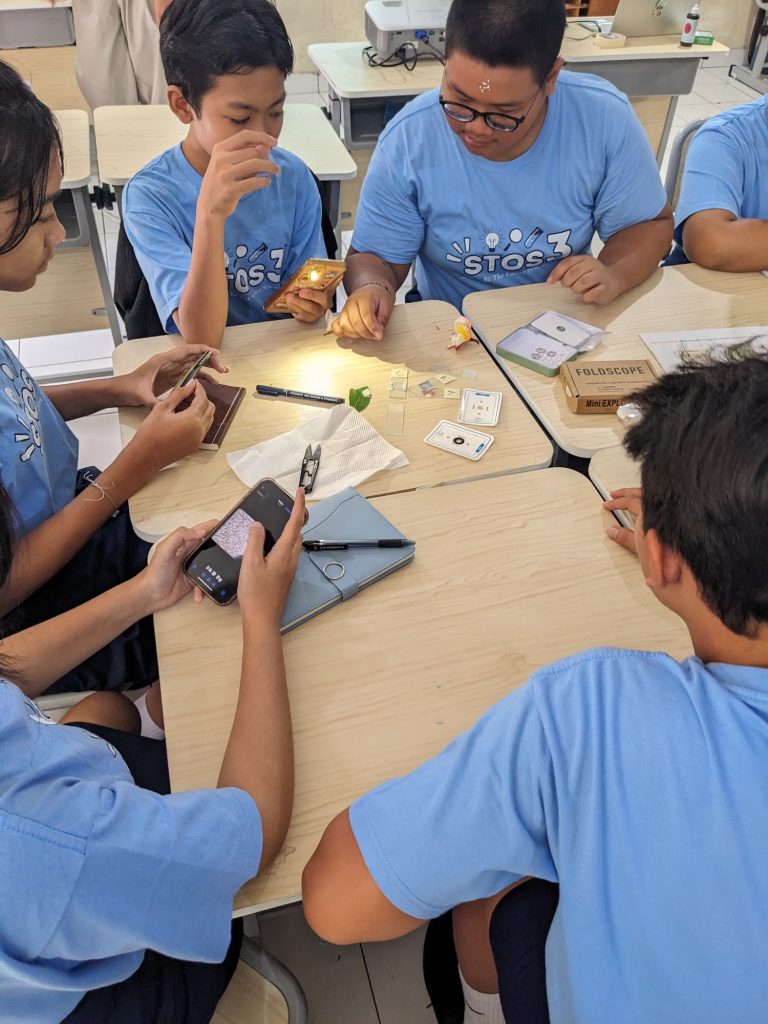
The smartphone as scientific instrument
Perhaps one of the most striking aspects of the workshop was watching students naturally use their smartphones as part of the scientific process—using torch lights for illumination and cameras for magnification with the Foldscope.
This matters because nearly everyone in Indonesia, including in rural areas, has access to smartphones. By designing tools that integrate with devices people already own, SpudnikLab dramatically lowers the cost barrier to scientific education. A traditional laboratory microscope costs hundreds or thousands of dollars. A Foldscope costs a few dollars and turns the smartphone in your pocket into a microscope capable of magnifications high enough to see individual cells.
This model of “appropriate technology”—tools designed to be affordable, accessible, and suited to the context where they’ll be used—means that scientific exploration need not be limited to well-funded schools in wealthy areas. The students at SMP Negeri 3 had access to the same quality of observation that their peers in Singapore or San Francisco might have, without requiring expensive infrastructure.
Hands-on learning: why touch matters
The workshop facilitators noticed something significant: watching young students handle physical tools and experience the tactile nature of soil samples and collected specimens revealed “a sense of embodiment that is rarely present in traditional science classes.”
This observation touches on something education researchers increasingly recognise: embodied learning—learning that engages the hands and senses, not just the mind—creates deeper understanding and stronger memory formation. When you’ve held soil in your hands, felt its texture, smelled its earthy richness, and measured its pH yourself, “soil health” stops being an abstract phrase and becomes something concrete and memorable.
In an era when much education happens through screens, these tactile experiences become even more valuable. The students weren’t watching a video about microscopy or reading about pH—they were doing microscopy and pH testing, collaborating with classmates, troubleshooting problems, making discoveries.
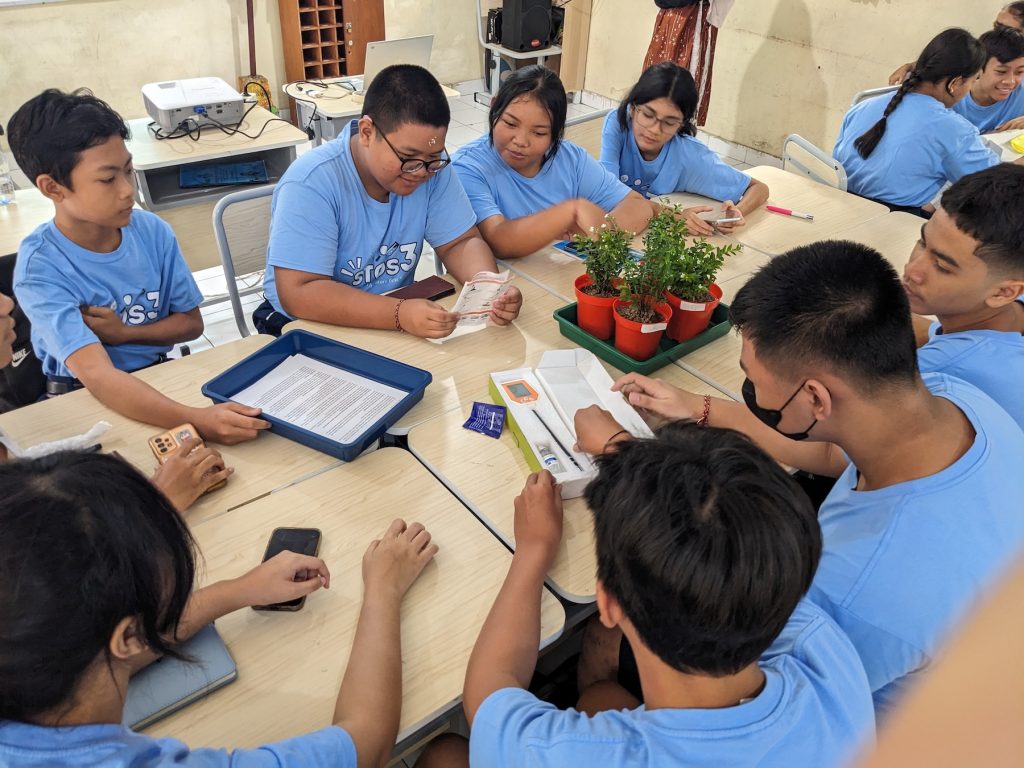
This hands-on engagement also fostered robust peer-to-peer learning. Students assisted each other with lighting for the Foldscope. They discussed their observations. They collectively puzzled over calibration issues. This collaborative problem-solving mirrors how scientists actually work—in teams, sharing insights and helping each other overcome obstacles. And as they would reveal in the surveys after the workshop later, the students also valued the fun of hands-on learning.
Seeds of future change
Will a single afternoon workshop with a pH tester and a paper microscope solve Bali’s environmental challenges? It plants seeds.
Some of these students may pursue environmental science, agriculture, or marine biology. Others may become teachers, business owners, government officials, or parents. Whatever paths they follow, they’ll carry with them the memory of seeing hidden worlds through a simple lens, of making scientific measurements with their own hands, of troubleshooting problems and finding solutions.
They’ll remember that science isn’t something that only happens in distant laboratories or expensive institutions—it’s something they can do, with accessible tools, in their own community. They’ll understand that the environment isn’t an abstract concept but a measurable reality, and that tools exist to understand and monitor it.
And perhaps most importantly, they’ve experienced the joy of curiosity satisfied—that electric moment when something previously invisible or mysterious suddenly becomes clear and understandable. That feeling is what creates lifelong learners and engaged citizens.
In Denpasar, on a school holiday in July, a group of teenagers discovered that the world is full of hidden wonders, and that the tools to reveal those wonders can fit in a simple kit. That’s a lesson that might shape how they see—and protect—their environment for decades to come.
